Anti-tank missiles mounted on combat vehicles
Looking back half a century ago, we can talk about the emergence of a rather interesting project in which the Swingfire rocket and the Striker machine were combined.
Of all the CVR (T) project variants (Combat Vehicle Reconnaissance (Tracked) - combat tracked reconnaissance vehicle, a series of armored combat vehicles first developed in the UK by Alvis in the United Kingdom in 1960), Striker was probably the most original.
The machine, designed to provide anti-tank cover for other options, was equipped with a Swingfire anti-tank missile launcher.
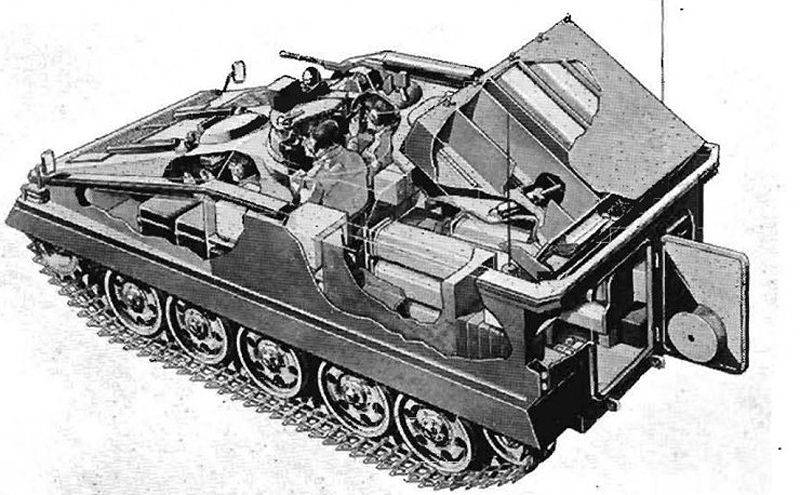
CVR (T) FV102 Striker Option
After the cancellation of the Orange William experimental rocket project in 1959, Fairey continued to develop wire-guided anti-tank missiles, resulting in the Swingfire model. The development of the complex continued for 12 years, and in 1969 the complex began to enter service with the British army. The warhead weighed 7 kg, and the rocket had a couple of unique characteristics that distinguished it from its competitors.
Starting video ATGM Swingfire
After launch, the rocket immediately changes direction to 90 degrees using the “jet steering wheel”. The aiming equipment can be installed at a distance of 30 meters, 15 meters above or below the launcher, which allows launches from the vehicle installed in the shelter. The Striker machine with a rocket launcher in the stowed position looked just like an armored personnel carrier, and not as an anti-tank complex.
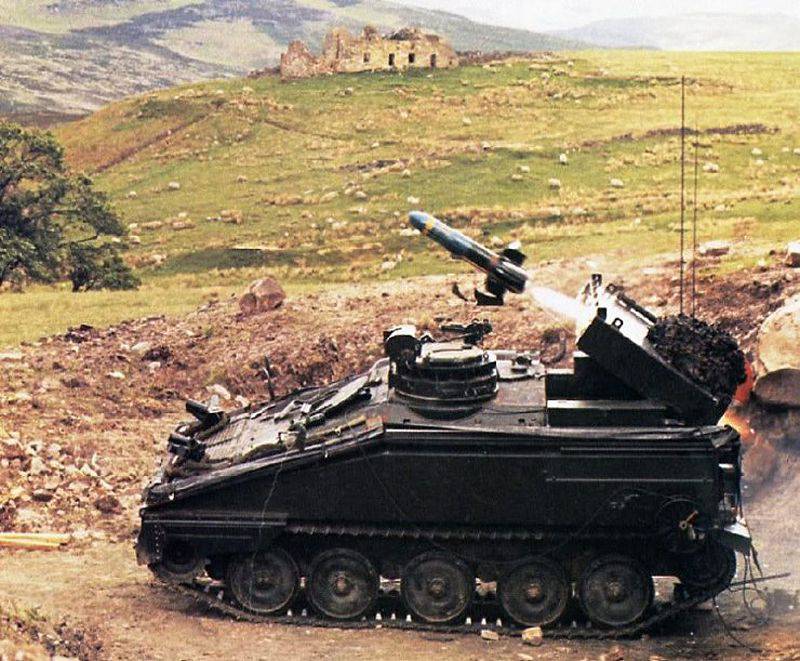
CVR (T) FV102 Striker
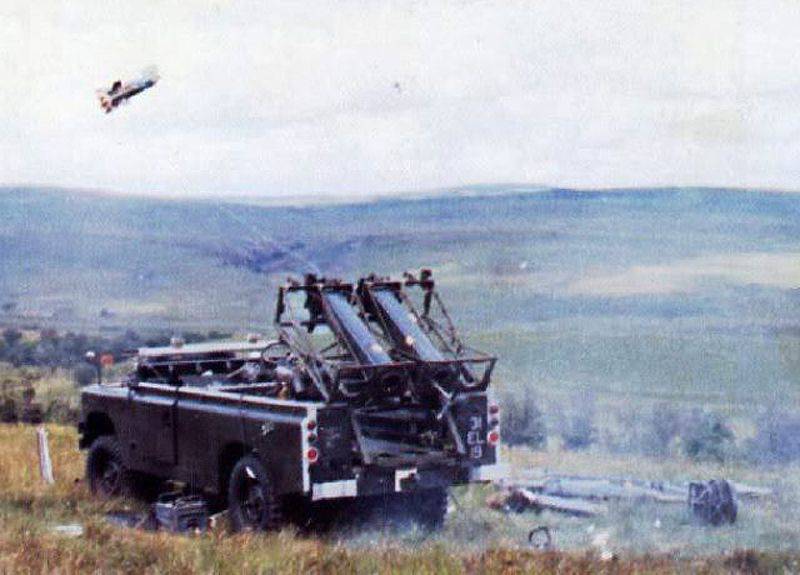
Swingfire rocket, rotate 90 degrees after launch
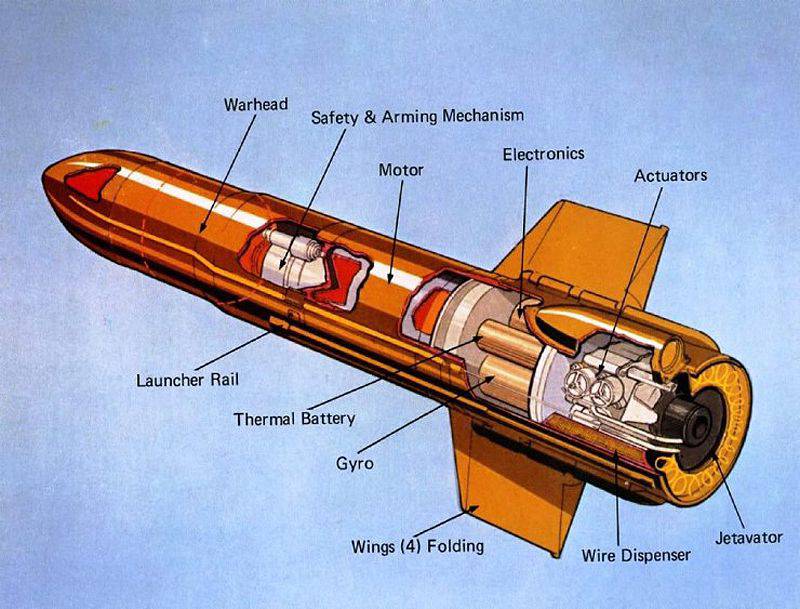
Swingfire rocket
The machine could carry five ready-to-launch missiles in containers, five more missiles were placed in the combat pack inside the hull.
In their research work, experts determined that the probability of hitting each Swingfire missile was 40%. That is, to destroy each tank exactly two and a half missiles will be needed; on the other hand, a machine firing tanks with its ATGMs will be able to destroy only two tanks, after which it will itself be destroyed.
Consequently, this determines the number of five missiles ready for launch.
The Swingfire complex was also installed on a number of heavy and light platforms, FV438, various Land Rover models and other light machines.
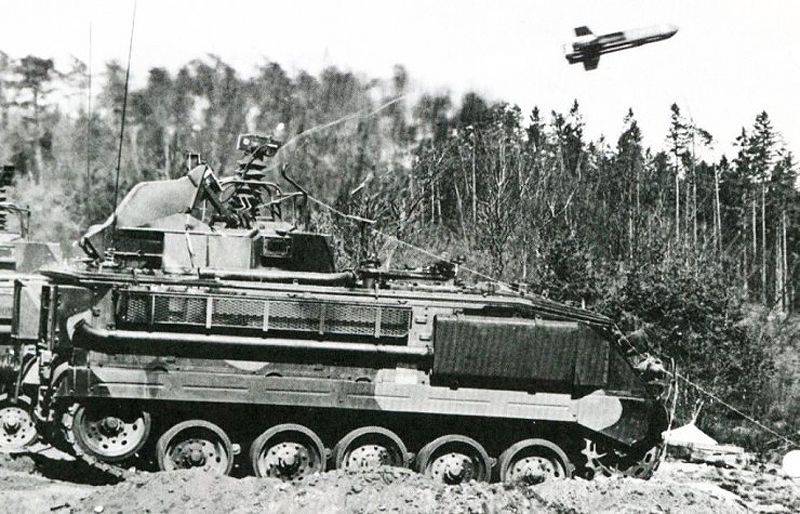
FV438
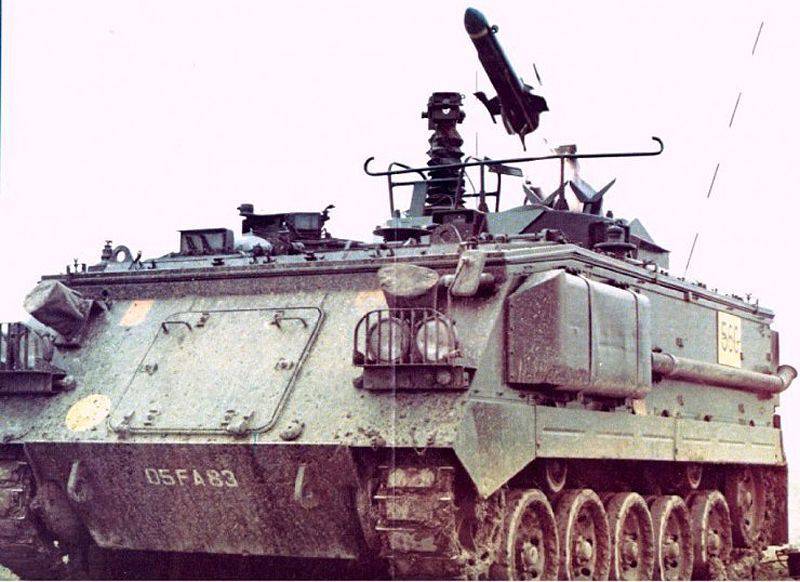
FV 438
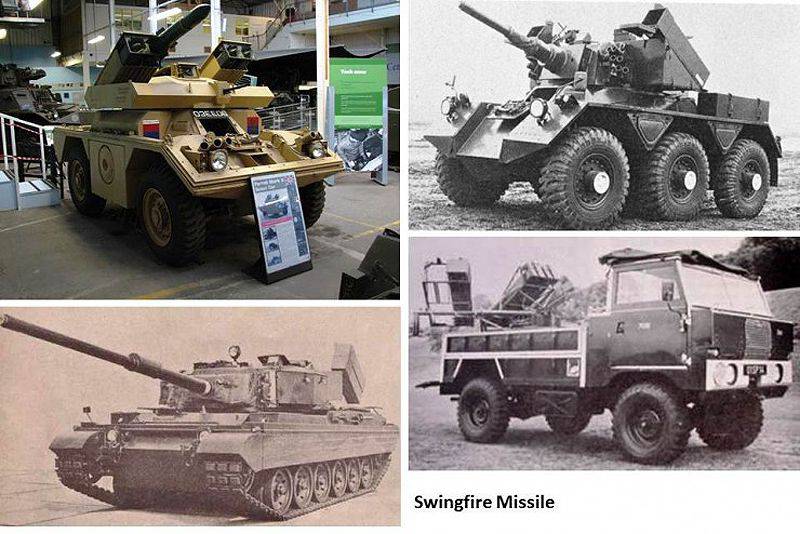
Swingfire rocket
Most of the alternative platforms were for the most part experienced machines or were not in service. In contrast, the Striker was in service for a long time, having managed to participate in two conflicts in the Middle East and in the 1991 year and in the 2003 year. In both operations, he proved to be quite successful, and in a study conducted on the basis of the TELIC operation, special recommendations were made on revising the life of this machine.
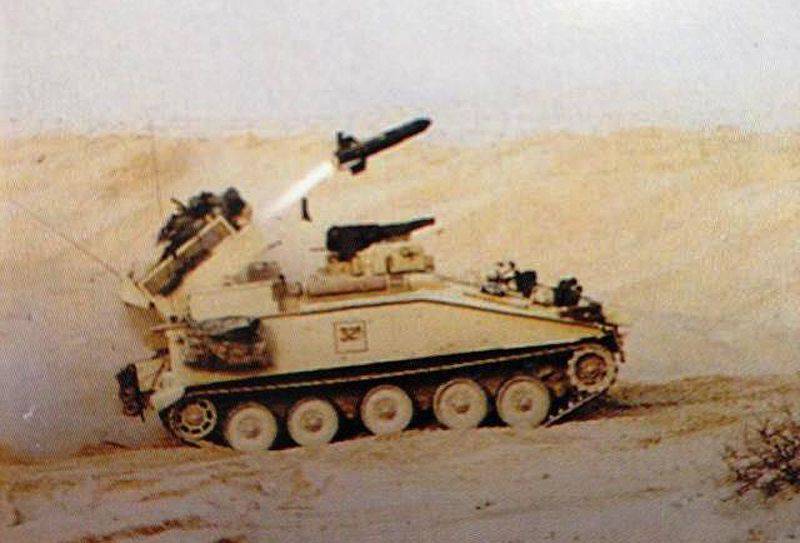
CVR (T) FV102 Striker, Iraq 1991 Year
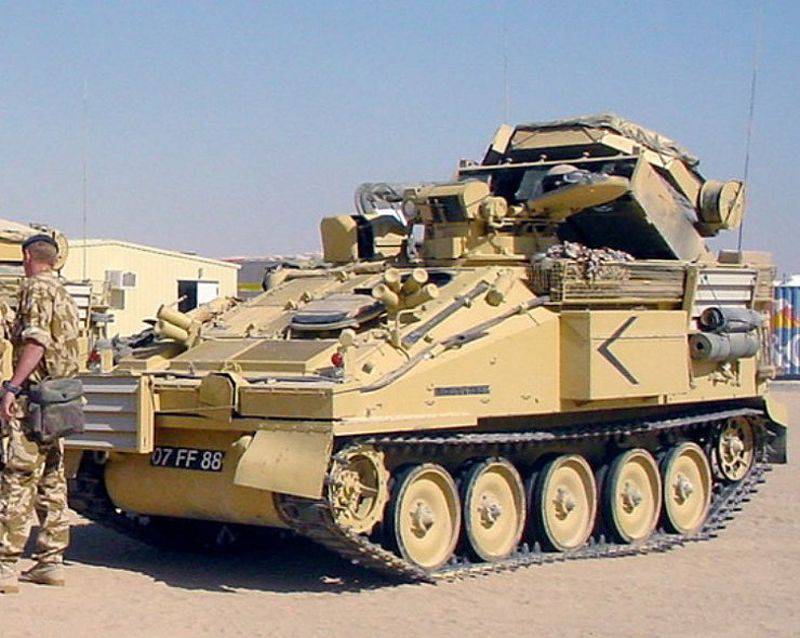
FV102 CVR (T) Striker, Iraq 2003 Year
In 1986, the Spartan Milan Compact Turret (MCT) version of the FV120 was introduced, although the maximum range of the Milan complex was 2000 meters, which was significantly inferior to Swingfire with its 4000 meters.
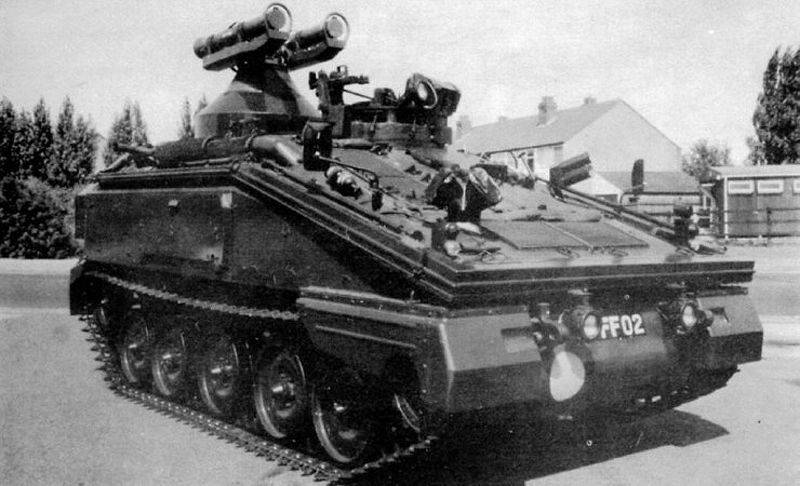
CVR (T) FV103 Spartan with Milan Compact Turret Tower
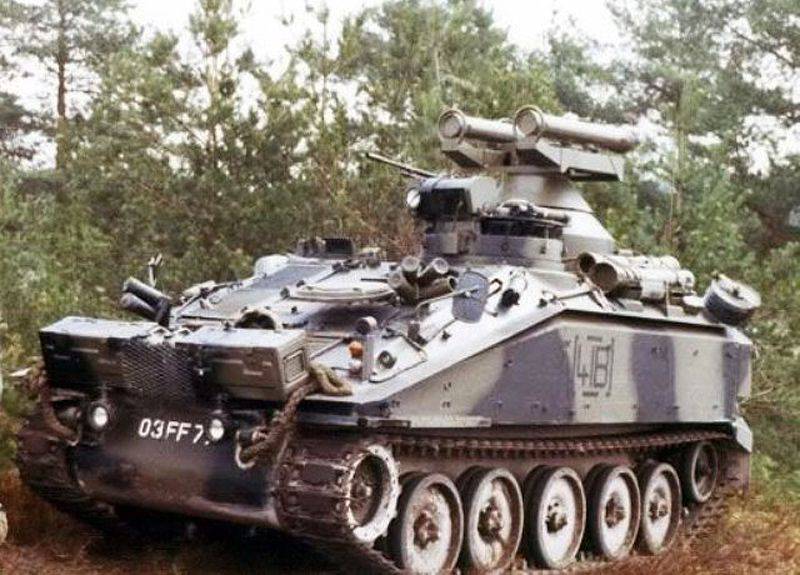
CVR (T) FV103 Spartan with Milan Compact Turret Tower
In order to compensate for the shortage of FV438 machines in the motorized infantry units, several Milan launchers in 2003 were welded to the roof of the towers of the Warrior BMP.
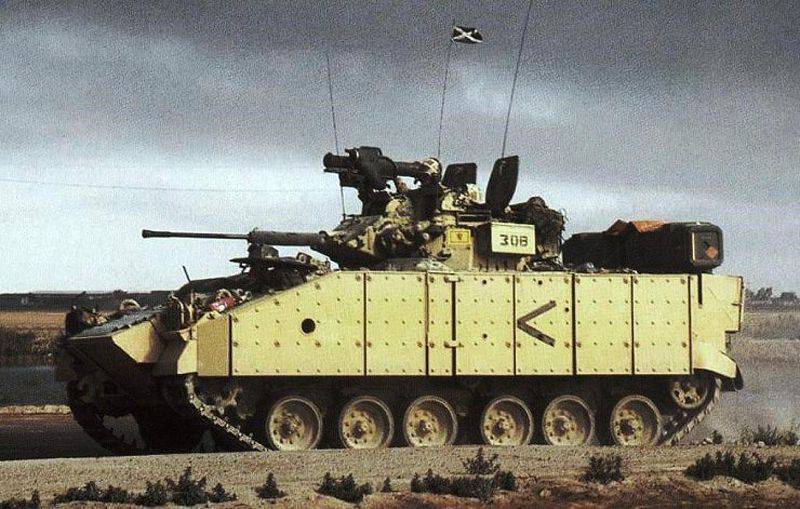
FV510 Warrrior with missile launcher Milan, Iraq
The prospective FFLAV armored vehicles family defined the requirements for the TRACER anti-tank missile transporter. The TRACER project has reached the stage of displaying a mock-up equipped with a Brimstone missile launcher.
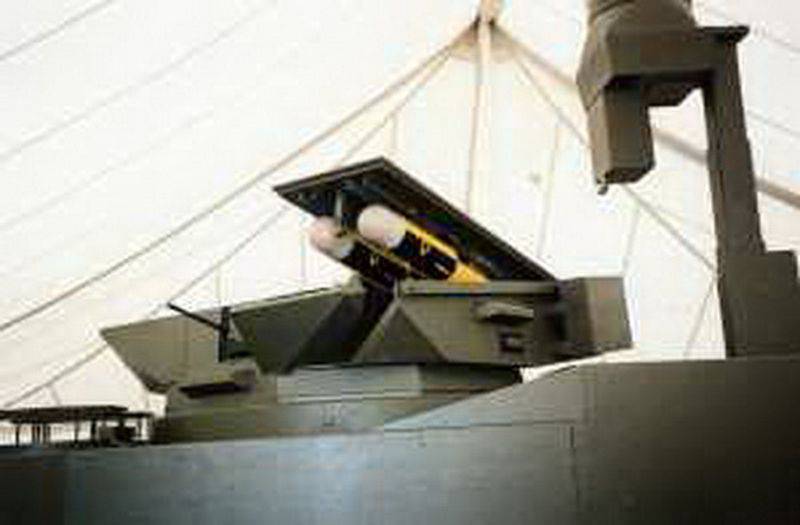
Lancer TRACER machine with Brimstone rocket launcher
The GKN “Stealth Warrior” armored vehicle with a rocket launcher was also shown.
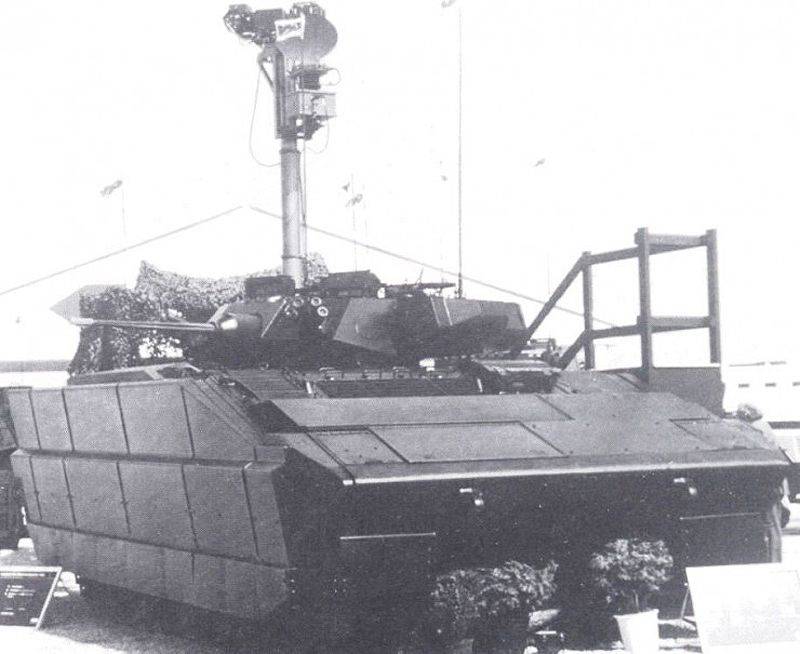
Stealth Recce Warrior 1998 reconnaissance vehicle
A similar approach was implemented on the Stormer 30.
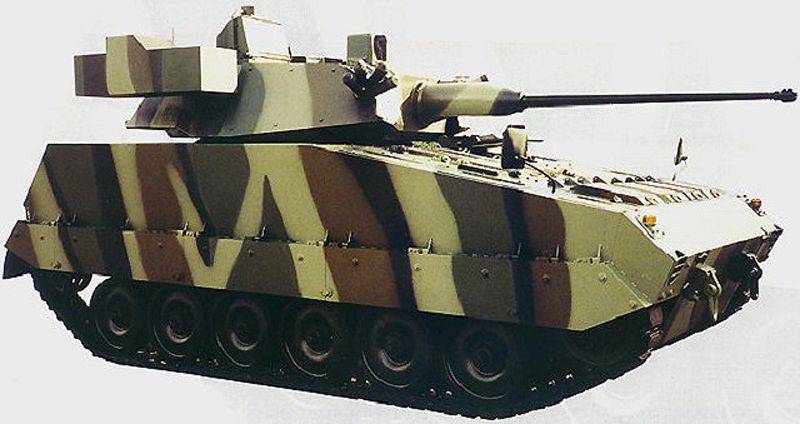
Stormer 30
Due to the fact that the FRES program was closed, and Swingfire and Milan missiles were decommissioned, the British army still does not have anything analogous to the Striker or FV438 machines and does not have plans for an equivalent replacement.
It seems that this concept is dead and buried, at least for the British army.
Perhaps the argument in this case is that with the increasing availability of high-precision fire from land, air, and even from the sea, such systems are no longer necessary, but combat experience and its analysis will probably be able to change this trend.
In the armed forces of other countries, the Hellfire missile was used in several versions of launchers.
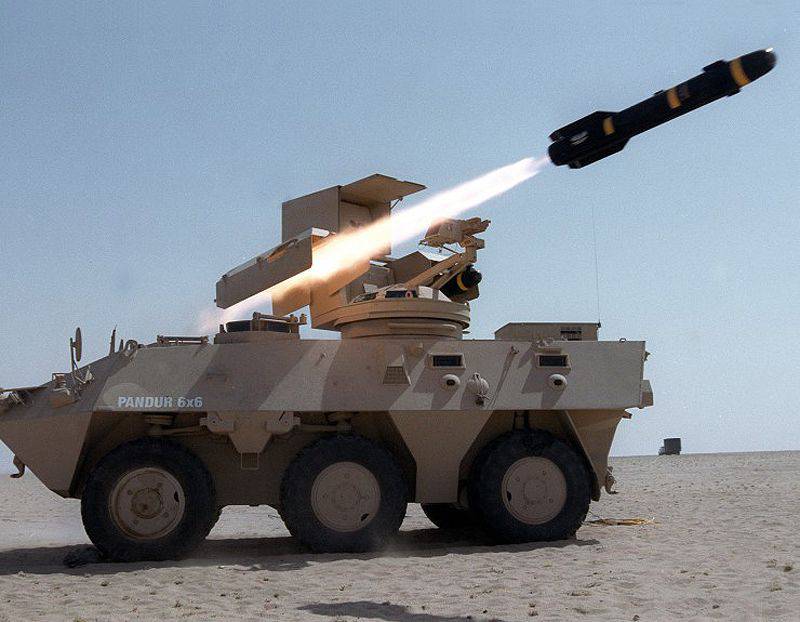
Hellfire II launcher on Pandhur 6x6 machine
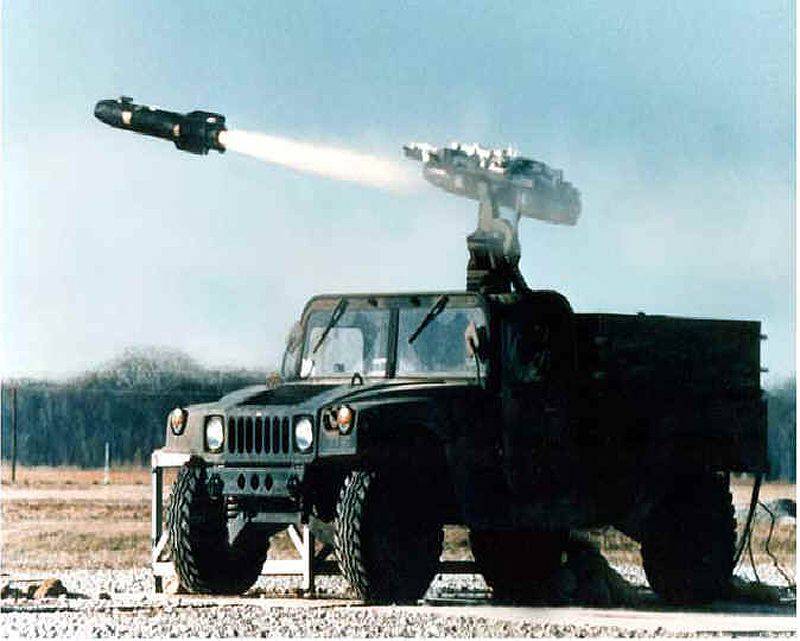
Hellfire rocket launch from HUMVEE jeep
Vulnerable TOW missiles continue to be upgraded and installed on a number of armored and light vehicles. According to available information, the last option has a range of 7 km and significantly less flight time.
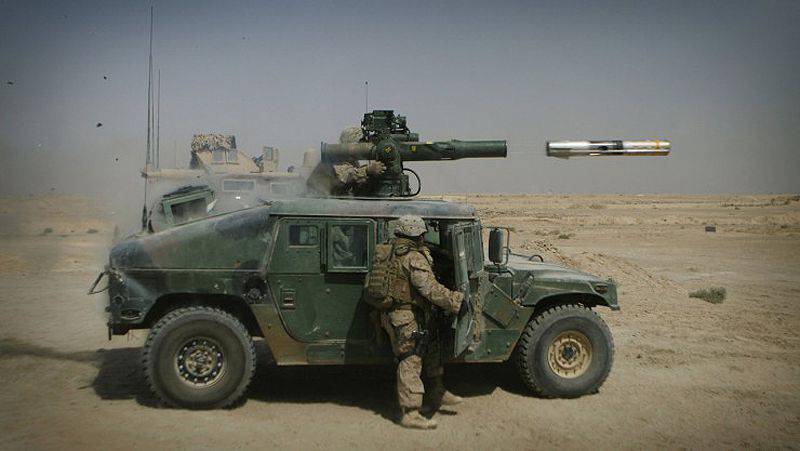
TOW missile
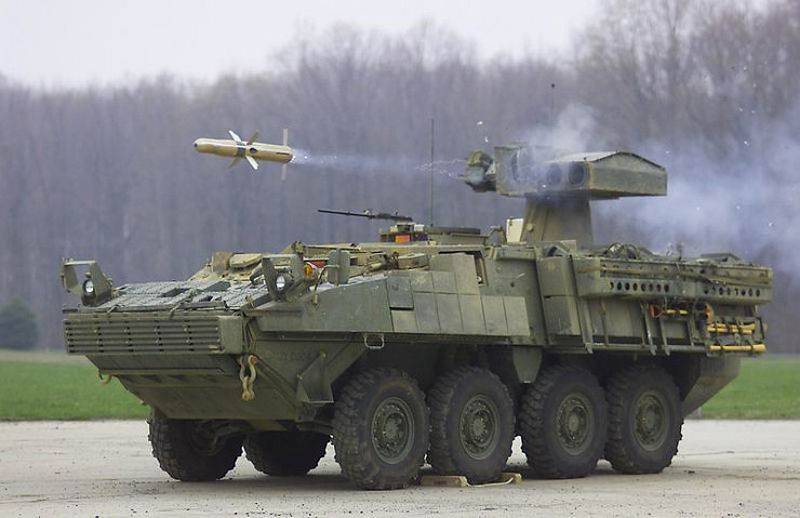
TOW missile at Stryker
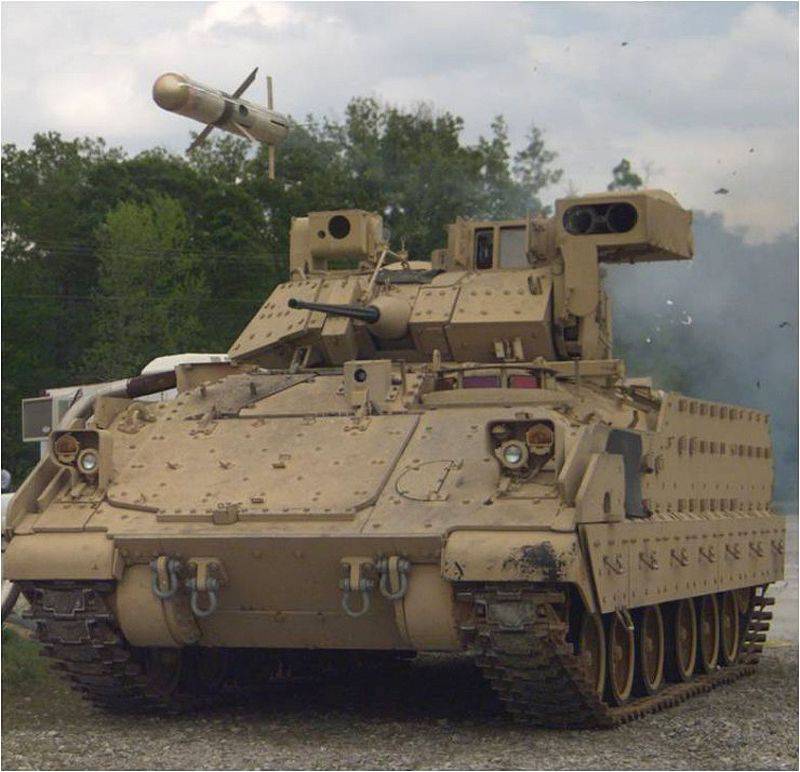
TOW missile at Bradley
There was even the concept of installing a TOW rocket on a Spartan machine.
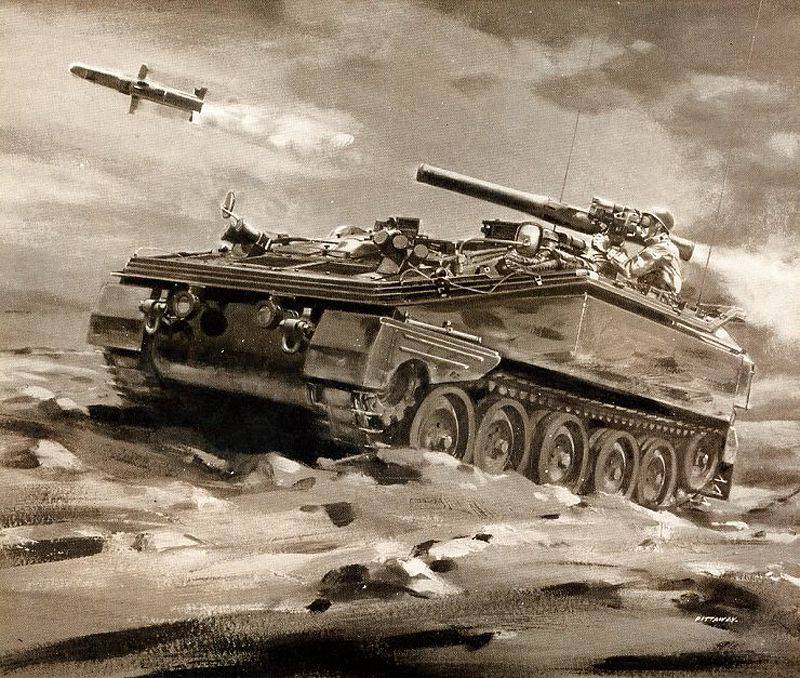
TOW launcher on a Spartan machine
During the Cold War, the German concept of installing HOT rockets on the lifting platforms of the Jagdleopard or Panther machines appeared.
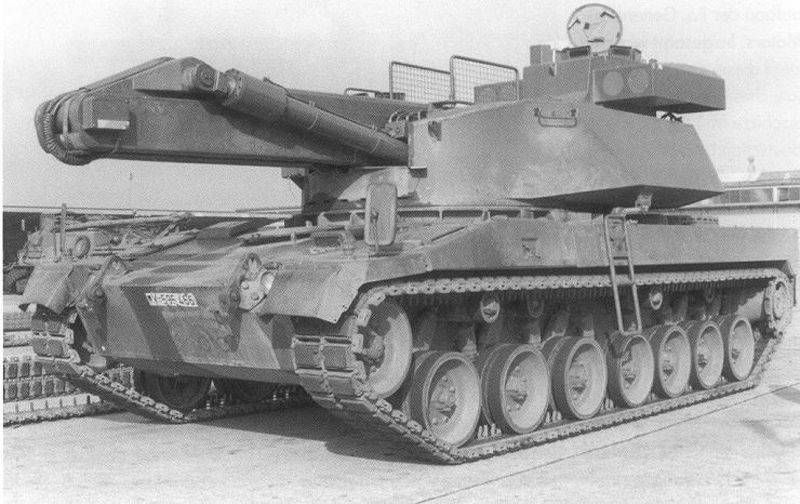
Jagdleopard lifting platform for the installation of HOT anti-tank missiles
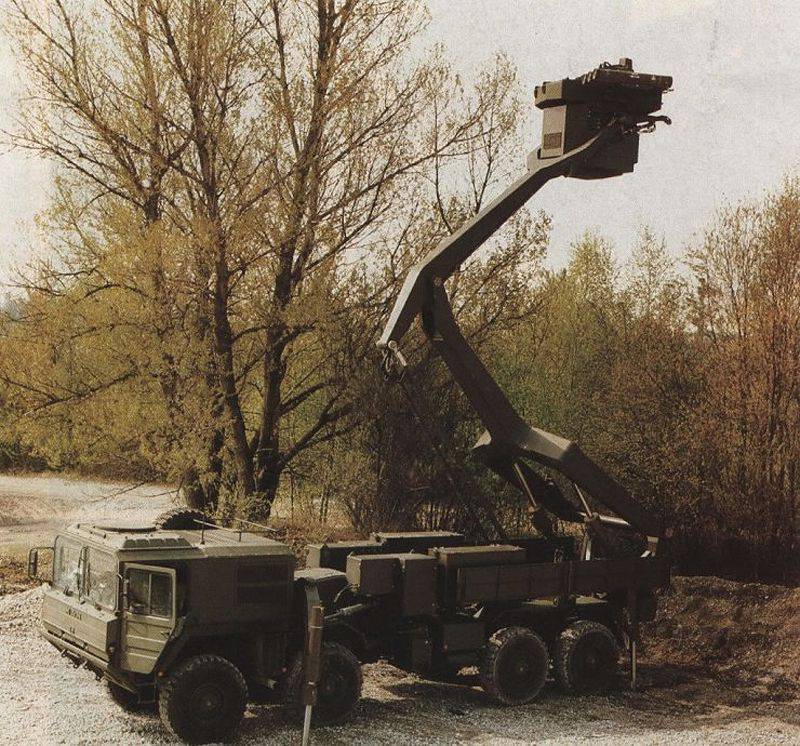
Lifting platform of armament with HOT missiles on a lifting platform Missile
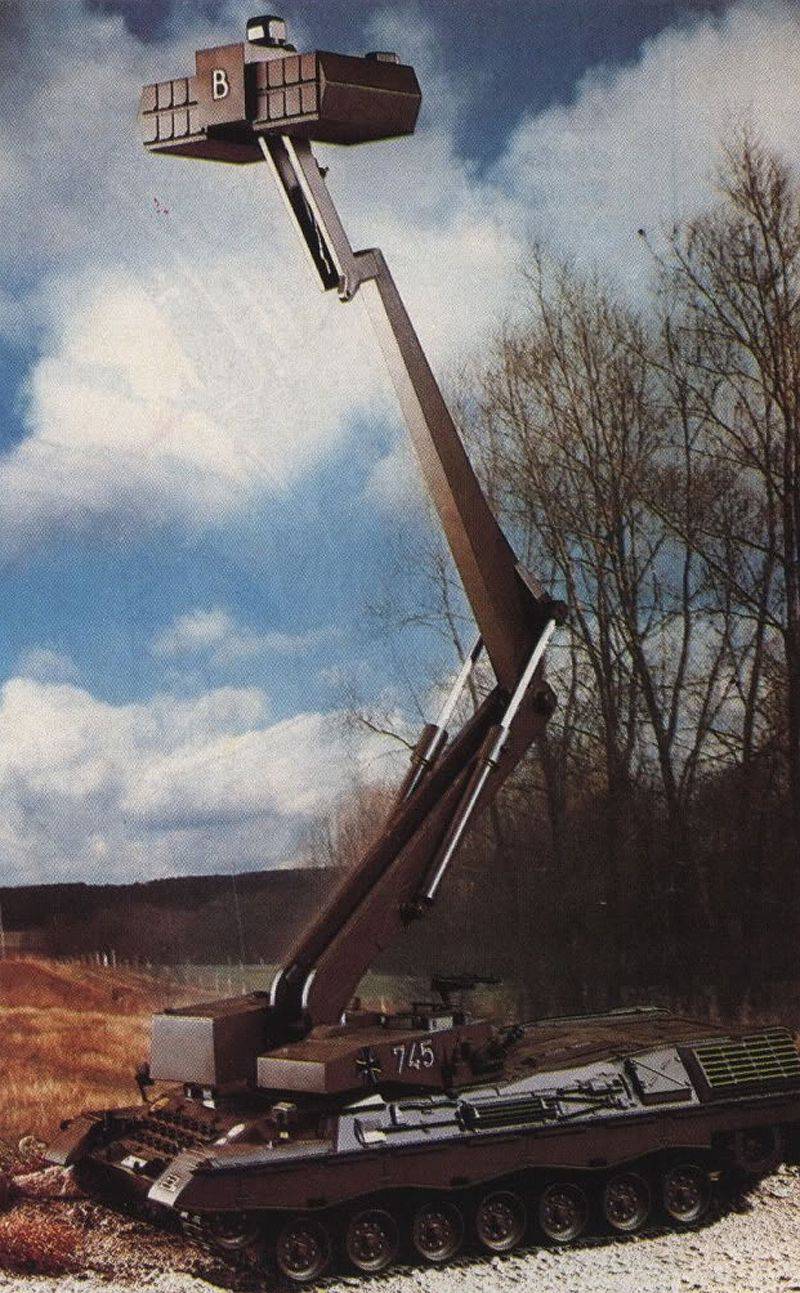
Jagdleopard lifting platform for HOT anti-tank missiles
Of course, all this is interesting, but the concept of a special anti-tank missile transporter seems somewhat outdated. It is now customary to install anti-tank missile systems on universal vehicles.
The first was a machine with a rocket launcher Long Range Surveillance and Attack Vehicle (LRSAV) from the company Lockheed Martin.
The complex includes the Stryker, a retractable mast with a set of sensors with a laser rangefinder and two types of missiles: for armored targets, the Hellfire II rocket and the 70-mm DAGR guided missile, designed for smaller or unarmored targets.
LRSAV is a fully integrated weapons platform. It combines a rocket with excellent characteristics, a weapon control system and a new opto-electronic station on a retractable mast with optical and infrared instruments. Such a system is able to capture the full range of targets and use missiles from a variety of ground platforms.
During the tests, the LRSAV system installed on the machine launched a HELLFIRE II rocket at a target at a distance of 6,4 km and a DAGR rocket at a target at a distance of 3,5 km. Both missiles successfully hit their targets. In both launches, the capabilities of the “capture before start” and “capture after start” modes were tested to demonstrate the flexibility of the LRSAV complex in various scenarios. In addition, the AH-64D Apache helicopter, equipped with a modernized Target Acquisition Designation Sight / Pilot Night Vision Sensor (M-TADS / PNVS) from Lockheed Martin, was used for remote target designation, confirming the ability of the LRSAV platform to jointly capture targets.
Lockheed Martin's LRSAV missile system provides excellent capabilities that allow you to destroy targets from safe distances, as well as improved capabilities for successfully completing a combat mission with minimal indirect losses.
Later, Lockheed Martin conducted a couple of test launches of the Javelin rocket from two different machines and two different launchers: from a light launcher from a TAPV machine and a heavier system on a Boxer machine.
Javelin Rocket Launch Video from Textron TAPV
Javelin rocket launch video from a Boxer armored personnel carrier launcher
Materials used:
www.thinkdefence.co.uk
www.wikipedia.org
www.youtube.com
Information